2023 年最佳 Mac:每款 Apple Mac 和 MacBook 的比较
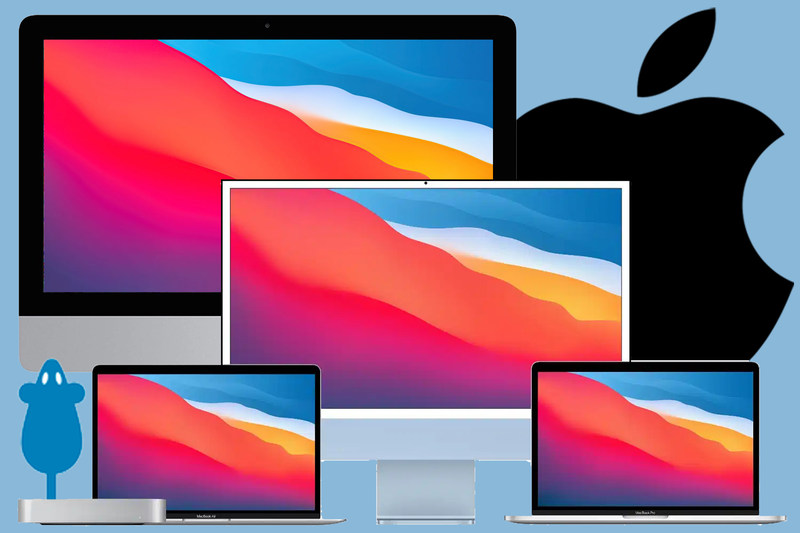
If you’re wondering which Mac to buy, you’ve come to the right place. In our 2023 Mac buying guide, you’ll find everything you need to know about the MacBook Air, MacBook Pro, Mac mini, iMac, Mac Pro and the Mac Studio, with expert buying advice to help you choose the machine (and configuration) that’s right for you.
Apple makes six different types of Mac: MacBook Air, MacBook Pro, Mac mini, iMac, Mac Studio, and Mac Pro, but within each of those categories there are variations in the size, specs and features, so things can get pretty complicated. That’s where this guide comes in, helping you make the right decision. If you’re simply looking for a great offer, visit our MacBook Pro deals, MacBook Air deals, iMac deals, Mac Studio deals, and Mac mini deals pages.
We are now three years into Apple’s transition from Intel processors to its own silicon that includes CPU, GPU, and unified memory. The transition began with the introduction of the M1 in November 2020, followed by the M1 Pro, M1 Max and M1 Ultra, we have now progressed to the M2 (June 2022), the M2 Pro and M2 Max (January 2023), and the M2 Ultra in June 2023. With the arrival of the M2 Ultra Mac Pro in June 2023 every Mac Apple now sells has made the transition to Apple’s own chips. For more information about Apple’s silicon read: Mac processor comparison: M1 & M2 vs Intel.
For help choosing the best Mac laptop, we also have a MacBook buying guide.
Every Mac Apple sells
Below we’ll take you through each Mac that is currently available from Apple, to give you an overview of what’s on offer and what you’ve got to choose from.
MacBook Air, M2 (13.6-inch 2022, 15.3-inch 2023) & M1 (13.3-inch 2020)
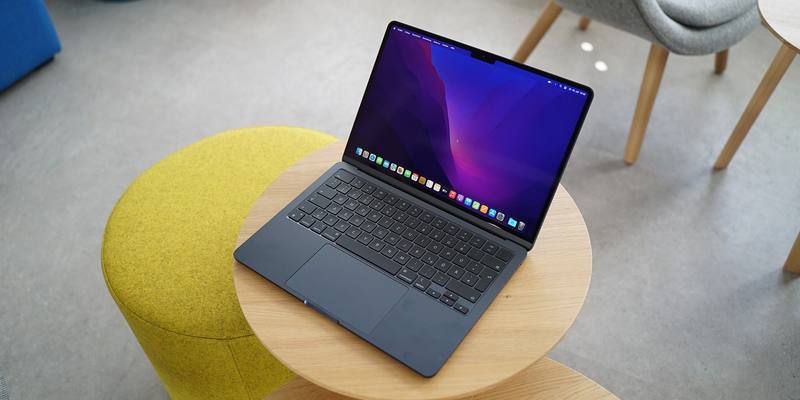
Best Prices Today:
$1,086.95 at Amazon$1099.00 at Adorama$1099.00 at Apple
What is it? The MacBook Air is Apple’s most affordable laptop, designed with portability in mind. There are currently three versions of the MacBook Air available from Apple in three sizes and five configurations.
The newest MacBook Air is the 15-inch MacBook Air M2 model that arrived in June 2023, there are two configurations available. There is also a 13.6-inch MacBook Air M2, which was introduced in July 2022 and has the same two configurations as the 15-inch model. Finally there is a slightly smaller 13.3-inch MacBook Air with M1 which launched back in November 2020. For more information about how the different Apple processors compare read: Mac processor comparison: M1 & M2 vs Intel.
Who’s it for? The MacBook Air is ideal for the budget-conscious. It’s also for anyone who is always on the go, doesn’t want to be bogged down by a regular-size laptop, and needs a computer that’s more versatile than an iPad.
How much does the MacBook Air cost? There are five configurations starting at $999/£999 for the MacBook Air M1 and $1,099/£1,149 for the MacBook Air M2 (which had a price drop from $1,199/£1,249). The 15-inch MacBook Air starts at $1,299/£1,399.
What are the specifications?
The specifications of the M2 Macs are the same (although there are some differences in terms of audio, with the larger model featuring more speakers and obviously a larger screen).
- Apple 8-core M1 SoC with 8GB of memory, a 7-core GPU, and a 16-core Neural Engine; 256GB SSD, two Thunderbolt/USB 4 ports
- Apple 8-core M2 SoC with 8GB of memory, an 8-core GPU, and a 16-core Neural Engine; 256GB SSD, two Thunderbolt/USB 4 ports
- Apple 8-core M2 SoC with 8GB of memory, a 10-core GPU, and a 16-core Neural Engine; 512GB SSD, two Thunderbolt/USB 4 ports
- Additional options for M2 model: 16GB or 24GB unified memory. Up to 2TB storage
- Additional options for M1 model: 16GB unified memory. Up to 2TB storage
What are display specifications?
- The 15.3-inch Liquid Retina display has a native resolution of 2,880×1,864 and 500 nits brightness.
- The 13.6-inch Liquid Retina display has a native resolution of 2,560×1,664 and 500 nits brightness.
- The 13.3-inch Retina display on the M1 MacBook Air has a native resolution of 2,560×1,600 and 400 nits brightness.
How do I connect stuff? All MacBook Air with M2 chip have a MagSafe port for charging as well as a pair of Thunderbolt/USB 4 connectors. The M1 MacBook Air only offers the two Thunderbolt/USB 4 connectors, so one of these will have to be utilised for charging. If you want to connect USB-A devices, you need either a USB-C to USB adapter, like Apple’s $19 one, or a USB-C hub that has USB-A ports. See our round up of the best USB-C hubs and adapters.
The MacBook Air has built-in Wi-Fi for connecting to a network. It also provides built-in Bluetooth for wirelessly connecting a mouse or other peripherals. If you want to connect to an ethernet network, you need an adapter.
How fast is it? The M2 provides performance that is leaps and bounds faster than the Intel processors that were previously found in the MacBook Air, and Apple claims an 18 percent total CPU improvement over the M1, and a 35 percent improvement in graphics speed. It’s plenty fast enough for general purpose use—it’s actually close to performing like the 13-inch M1 MacBook Pro in this situation. But because it doesn’t have a fan to keep the computer cool, it may throttle down its speed during long processing sessions, such as video editing or compiling code. Even then, it’s still plenty fast.
Macworld’s buying advice: The MacBook Air is a great affordable laptop for someone who does general-purpose work and moves around a lot, such as a student or a self-employed person. You can’t easily upgrade the storage or memory after purchase, so you should buy the model with the largest amount of storage you can afford. We do advise that if you can afford to you should avoid the entry-level models due to slower SSDs, but that may not be an issue if the kind of work you do doesn’t
Read our full
Apple 13-inch MacBook Air (2022, M2) review
13-inch MacBook Pro, M2 (2022)
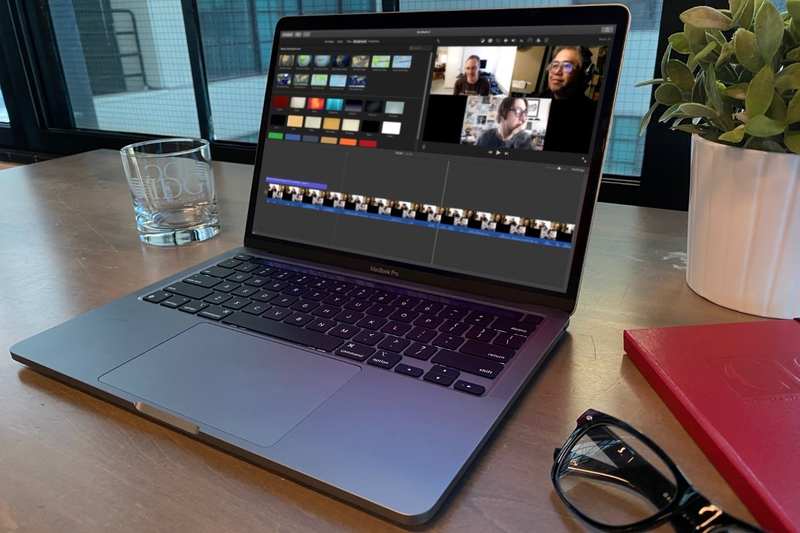
Best Prices Today:
$1,149.00 at Amazon$1299.00 at Adorama$1299.00 at Apple
What is it? The 13-inch MacBook Pro features an M2 chip and was introduced in June 2022. This model comes with 10-core GPU and either 256GB SSD or 512GB SSD. The “Pro” in the MacBook Pro name is meant to signify that this is a Mac that’s designed for those who are more demanding than the Air user (who’s main focus is on portability). However, when comparing the MacBook Air and 13-inch MacBook Pro the differences are quite narrow.
Who’s it for? The 13-inch MacBook Pro is for a more demanding user than the MacBook Air. However, there are three different types of MacBook Pro available from Apple: 13-inch, 14-inch and 16-inch models, and we’d tend to suggest that the 13-inch MacBook Pro would be better described as a MacBook to better differentiate it from its larger siblings.
How much does the 13-inch MacBook Pro cost: There are two configurations starting at $1,299/£1,349 for the MacBook Pro M2 with 256GB SSD and $1,199/£1,549 for the MacBook Pro M2 with 512GB SSD.
What are the specifications? Apple offers two standard configurations:
- Apple 8-core M2 SoC with 8GB of memory, a 10-core GPU, and a 16-core Neural Engine; 256GB SSD, two Thunderbolt/USB 4 ports
- Apple 8-core M2 SoC with 8GB of memory, a 10-core GPU, and a 16-core Neural Engine; 512GB SSD, two Thunderbolt/USB 4 ports
- Additional options: 16GB or 24GB unified memory. Up to 2TB storage.
What are display specifications?
- The 13.3-inch Retina display has a native resolution of 2,560×1,600, and 500 nits brightness.
What is the Touch Bar? All 13-inch MacBook Pro models include the Touch Bar interface at the top of the keyboard. Other Mac laptops used to have this feature, but it is now only available on the 13-inch model. The Touch Bar is an input device that sits on top of the keyboard. It’s basically a narrow touchscreen. The buttons and controls available on the Touch Bar change depending on the software you are using. Learn more about the Touch Bar.
How do I connect stuff? No need to worry about wireless connectivity: the MacBook Pro has Wi-Fi and Bluetooth.
It’s the wired connectivity you need to be concerned with. The MacBook Pro has only two Thunderbolt/USB 4 ports that are compatible with USB-C. If you have a Thunderbolt device, you can plug it directly into the laptop. The same goes for any USB-C device. However, if you have wired devices that aren’t USB-C or are an older version of Thunderbolt, you’ll need an adapter. We have a separate MacBook Pro Thunderbolt adapter guide to help you decide which ones you’ll need. Unfortunately, be prepared to shell out a good amount of extra cash.
How fast is it? The 13-inch MacBook Pro performs like the MacBook Air, since they have the same processor. But the MacBook Pro’s design lends itself to being better at keeping cool and maintaining its speed, while the thinner MacBook Air needs to throttle down for long processing tasks.
Macworld’s buying advice: For mobile Mac users whose work requires a lot of processing power—you do video or audio editing, graphics work, or write software—but you also want a small laptop, the 13-inch MacBook Pro fits the bill. However, the 14- and 16-inch MacBook Pro offers a significant speed boost over the 13-inch model, but they are bigger and heavier laptops. If your work mostly involves web surfing and other productivity tasks, however, go for a MacBook Air. As with the MacBook Air, we do advise that if you can afford to you should avoid the entry-level models due to slower SSDs
We compare all the MacBook Pro here: Which MacBook Pro: 13, 14, 16-inch compared. We also look at how the MacBook Air and 13-inch MacBook Pro compare.
Read our full
Apple 13-inch MacBook Pro (M2, 2022) review
14-inch MacBook Pro, M2 Pro & M2 Max (2023)
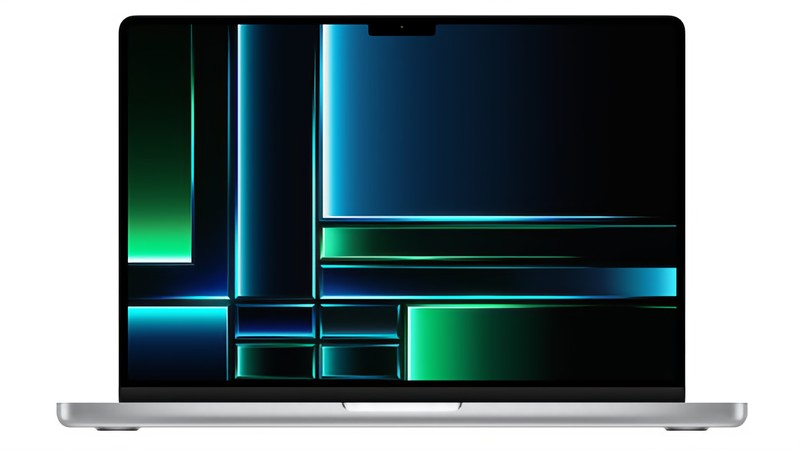
Best Prices Today:
$1799.00 at Best Buy$1,939.99 at Amazon$1999.00 at Adorama
What is it? The 14-inch MacBook Pro with M2 Pro or M2 Max was introduced in January 2023 and is one of Apple’s top-of-the-line laptops, the other being the 16-inch MacBook Pro. There’s not a huge difference between the specs on offer–both offer the M2 Max as a processor option–but the 14-inch MacBook Pro is cheaper than the 16-inch. If you want a laptop that can handle any task you throw at it—and you don’t have a constraining budget—you want one of these laptops.
Who’s it for? When Apple called these “Pro” laptops, they weren’t kidding around. If your work is very demanding processing power, these laptops are happy to handle it. Work in pro-level software all the time? Get a 14- or 16-inch MacBook Pro. With either the M2 Pro or M2 Max processor, they’re the fastest laptops Apple has ever created.
How much does the 14-inch MacBook Pro cost? There are three configurations starting at $1,999/£2,149 for the 14-inch MacBook Pro M2 Pro with 10-core CPU, 16-core GPU, 16GB unified memory and 512GB SSD, and $2,499/£2,699 for the 14-inch MacBook Pro M2 Pro with 12-core CPU and 19-core GPU, 16GB unified memory and 1TB SSD. The third option is the M2 Max version with 12-core CPU, 30-core GPU, 32GB memory and 1TB SSD, that costs $3,099/£3,349.
What are the specifications? Here are the standard configurations for the 14-inch MacBook Pro
- Apple 10-core M1 Pro SoC with 16GB of memory, a 16-core GPU, and a 16-core Neural Engine; 512GB SSD, 67W power adapter
- Apple 12-core M1 Pro SoC with 16GB of memory, a 19-core GPU, and a 16-core Neural Engine; 1TB SSD, 96W power adapter
- Apple 12-core M1 Pro SoC with 32 of memory, a 32-core GPU, and a 16-core Neural Engine; 1TB SSD, 96W power adapter
- Additional options: M2 Max SoC with 12-core CPU, 38-core GPU, 16GB, 64GB or 96GB unified memory. Up to 8TB SSD.
What are display specifications?
- The 14.2-inch Liquid Retina XDR display has a native resolution of 3,024×1,964, 254 pixels per inch, 1,600 nits of maximum brightness (1,000 nits for HDR content, 500 nits for standard content), 1,000,000 to 1 contrast ratio, and ProMotion support with a refresh rate up to 120Hz.
What’s that notch at the top of the display? That’s the FaceTime 1080p camera, which is an improvement over the 720p camera in the 13-inch MacBook Pro, MacBook Air, and previous MacBook Pros. The notch does not affect the available screen area—the work area is a 16-by-10 space, while the screen surrounding the notch is considered extra space and is used to display the menu bar.
How do I connect stuff? The 14-inch MacBook Pro has Wi-Fi and Bluetooth for wireless connectivity. The 2023 models offer Wi-Fi 6E (802.11ax) and Bluetooth 5.3, which is an improvement on the predecessor.
As for its ports, Apple includes three Thunderbolt/USB 4 ports that are compatible with USB-C. If you have a Thunderbolt device, you can plug it directly into the laptop. The same goes for any USB-C device. However, if you have wired devices that aren’t USB-C or are an older version of Thunderbolt, you’ll need an adapter. We have a separate MacBook Pro Thunderbolt adapter guide to help you decide which ones you’ll need. Unfortunately, be prepared to shell out a good amount of extra cash.
These laptops also come with an HDMI 2.0 port for connecting an external display or projector, and an SDXC Card slot for plugging in memory cards from cameras, audio recorders, and other devices. The HDMI port in the 2023 model supports multichannel audio output.
How do I charge the laptop? Apple has equipped the 14-inch and 16-inch laptops with MagSafe, a magnetic connector that breaks away with a good tug. It’s a nice safety feature, but you can also charge using the Thunderbolt port, too.
The fast charging feature allows the laptop to go from no charge to 50 percent in 30 minutes, but you need to have the proper power adapter to do this. It won’t work with the 67W adapter in the $1,999 MacBook Pro. The 14-inch models need to use the 96W adapter and can do fast charging through MagSafe or a Thunderbolt port.
How fast is it? Apple built the 14-inch and 16-inch MacBook Pro models with pro users in mind and it shows in the performance. Its speed with software that can take advantage of the CPU’s multiple cores – and now that Apple has introduced the M2 Pro and M2 Max you can enjoy the fastest Mac laptops Apple has ever made.
Macworld’s buying advice: The only reason not to buy the 14-inch MacBook Pro would be if you saw a good deal on the M1 Pro version–we’ve been seeing some excellent deals and price cuts on these older models. Our other advice would be that if you are considering the 14-inch MacBook Pro because you need a powerful Mac then, ignore the $1,999 model in favor of the $2,499 model which has more CPU and GPU cores. If you don’t need 1TB storage, save money by adding the M2 Pro with 12‑core CPU and 19‑core GPU as a build to order option to the $1,999 model for an additional $300, bringing the price to $2,299.
Read our full
Apple 14-inch MacBook Pro (M2 Pro, 2023) review
16-inch MacBook Pro, M2 Pro & M2 Max (2023)
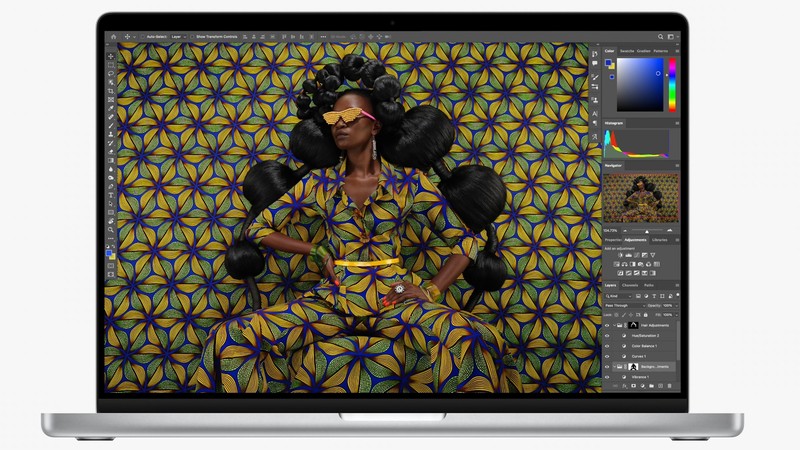
Best Prices Today:
$2,249.00 at Amazon$2499.00 at Adorama$2499.00 at Apple
What is it? The 16-inch MacBook Pro, like the 14-inch model above, was introduced in October 2022. It offers a similar set of specs and configuration options as the 14-inch MacBook Pro (above), but it has a higher price, a bigger screen and better battery life.
Who’s it for? This is Apple’s largest “Pro” laptop and it’s designed for people who need a portable Mac to do work that demands extreme processing power. You could save some money by opting for the 14-inch MacBook Pro, but if you need a big screen on your laptop this is the Mac for you. You’ll also benefit from longer battery life. Configured with the M2 Max this is the fastest and most powerful laptop Apple has ever created.
How much does the 16-inch MacBook Pro cost? There are three standard configurations starting at $2,499/£2,699 for the 16-inch MacBook Pro M2 Pro with 12-core CPU, 19-core GPU and 512GB SSD, $2,699/£2,899 for the MacBook Pro M2 Pro with 12-core CPU, 19-core GPU and 1TB SSD, and $3,499/£3,749 for the MacBook Pro M2 Max with 38-core GPU and 1TB SSD.
What are the specifications? Here are the standard configurations for the 16-inch MacBook Pro introduced in 2023.
- Apple 12-core M2 Pro SoC with 16GB of memory, a 19-core GPU, and a 16-core Neural Engine; 512GB SSD, 140W power adapter
- Apple 12-core M2 Pro SoC with 16GB of memory, a 19-core GPU, and a 16-core Neural Engine; 1TB SSD, 140W power adapter
- Apple 12-core M2 Max SoC with 32GB of memory, a 38-core GPU, and a 16-core Neural Engine; 1TB SSD, 140W power adapter
- Additional options: M2 Max SoC with 12-core CPU, 30-core GPU, 32GB, 64GB or 96GB unified memory. Up to 8TB SSD.
What are display specifications?
- The 16.2-inch Liquid Retina XDR display has a native resolution of 3,456×2,234, 254 pixels per inch, 1,600 nits of maximum brightness (1,000 nits for HDR content, 500 nits for standard content), 1,000,000 to 1 contrast ratio, and ProMotion support with a refresh rate up to 120Hz.
What’s that notch at the top of the display? That’s the FaceTime 1080p camera. The notch does not affect the available screen area—the work area is a 16-by-10 space, while the screen surrounding the notch is considered extra space and is used to display the menu bar.
How do I connect stuff? The 16-inch MacBook Pro has Wi-Fi and Bluetooth for wireless connectivity. The 2023 MacBook Pro offer Wi-Fi 6E (802.11ax) and Bluetooth 5.3, which is an improvement over the 2021 models.
As for its ports, Apple includes three Thunderbolt/USB 4 ports that are compatible with USB-C. If you have a Thunderbolt device, you can plug it directly into the laptop. The same goes for any USB-C device. However, if you have wired devices that aren’t USB-C or are an older version of Thunderbolt, you’ll need an adapter. We have a separate MacBook Pro Thunderbolt adapter guide to help you decide which ones you’ll need. Unfortunately, be prepared to shell out a good amount of extra cash.
These laptops also come with an HDMI 2.0 port for connecting an external display or projector, and an SDXC Card slot for plugging in memory cards from cameras, audio recorders, and other devices. The HDMI port in the 2023 model supports multichannel audio output.
How do I charge the laptop? Apple has equipped the 14-inch and 16-inch laptops with MagSafe, a magnetic connector that breaks away with a good tug. It’s a nice safety feature, but you can also charge using the Thunderbolt port, too.
The fast charging feature allows the laptop to go from no charge to 50 percent in 30 minutes, but you need to have the proper power adapter to do this. It won’t work with the 67W adapter in the $1,999 MacBook Pro. The 16-inch models must use the 140W adapter with MagSafe—fast charging does not work through Thunderbolt or with an adapter with lower wattage.
How fast is it? The 16-inch MacBook Pro models were built with pro users in mind so you can expect excellent performance. Your software will be able to take full advantage of the CPU’s multiple cores – which means that even though Apple has now introduced the M2 in the 13-inch MacBook Pro, the M1 Pro still exhibits an excellent boost. If you are a professional, you’ll easily benefit from the M1 Pro or M1 Max.
Macworld’s buying advice: The only reason not to buy right now is the strong likelihood that an update will soon be arriving: rumors suggest that new 14-inch and 16-inch MacBook Pro with M2 Pro and M2 Max processors will arrive in spring 2023. However, there are also reasons not to wait: we’ve been seeing some excellent deals and price cuts on these models, and we are expecting that when they launch the new models will cost more (at least outside the U.S.) The 16-inch $3.499 MacBook Pro is the laptop with all the bells and whistles, but the main difference between the 16 and 14-inch laptops is size and battery life – the available configurations are the same. This is for you if you are a demanding user who needs the big screen.
Read our full
Apple 16-inch MacBook Pro (M2 Pro, 2023) review
Mac mini, M2 & M2 Pro (2023)
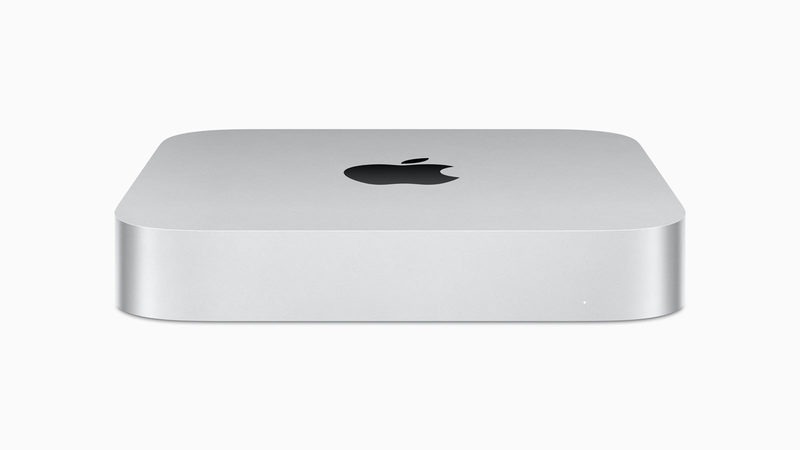
Best Prices Today:
$599.00 at Apple$599.00 at Best BuyNot Available at Adorama
What is it? The Mac mini with M2 and a Mac mini with M2 Pro were introduced in January 2023. This is Apple’s smallest desktop Mac and offers a nice combination of speed and affordability – in fact since the 2023 model arrived it’s more affordable than ever, $100/£50 less than it was. It’s not only fast enough for general-purpose use, but its multi-core speed is quite good—if you use a professional app like a video editor, 3D software, or developer tools, the Mac mini can handle it, no problem.
Who’s it for? Because of its price and performance, the Mac mini is a great Mac for just about anybody. It makes for an ideal primary Mac for a home or small office. Professionals on a budget will be satisfied with the Mac mini. If you’re switching from a PC, you can use your PC’s keyboard and mouse with the Mac mini. The Mac mini is also ideal as a secondary Mac in your home, and it can integrate into your home entertainment center.
How much does the Mac mini cost? There are three standard configurations starting at $599/£649 for the Mac mini M2 with 8-core CPU, 10-core GPU, 8GB unified memory and 256GB SSD, $799/£849 for the Mac mini M2 with 8-core CPU, 10-core GPU, 8GB unified memory and 512GB SSD, and $1,299/£1,399 for the Mac mini M2 Pro with 10-core CPU, 16-core GPU, 16GB unified memory and 512GB SSD.
What are the specifications? Apple sells three Mac mini models, including one that is Intel-powered.
- Apple 8-core M2 SoC with 8GB of memory, an 10-core GPU, and a 16-core Neural Engine; 256GB SSD
- Apple 8-core M2 SoC with 8GB of memory, an 10-core GPU, and a 16-core Neural Engine; 512GB SSD
- Apple 10-core M2 Pro SoC with 16GB of memory, an 16-core GPU, and a 16-core Neural Engine; 512GB SSD
- Additional options: M2 Pro with 12‑core CPU, 19-core GPU, 32GB unified memory. Up to 8TB SSD.
The Mac mini does not include a display, keyboard, or mouse, so you’ll have to provide your own, or you can customize your order to include these devices as extra-cost options.
How do I connect stuff? Like Apple’s other Macs, the Mac mini has Wi-Fi and Bluetooth. The $599 and $799 M2-based Mac minis have two Thunderbolt 4/USB 4 ports, while the M2 Pro-based Mac mini has four Thunderbolt 4/USB 4 ports. All Mac minis have two USB-A ports, an HDMI 2.0 port, a headphone jack, and a gigabit ethernet port.
To connect a display, you can use the HDMI port or a Thunderbolt port. You might have to buy an adapter if your display doesn’t have either HDMI or a port that can connect to Thunderbolt.
How fast is it? The $599 and $799 M2-based Mac minis are very fast, and offer the best performance to price ratio of any Mac that Apple offers. The Mac mini with M2 Pro offers the same 10-core CPU and 16-core GPU, 16GB memory and 512GB storage found in the M2 Pro MacBook Pro for $1,299 rather than $1,999 which is a huge saving and a great way to get a powerful Mac without spending a fortune.
Macworld’s buying advice: The Mac mini is an excellent machine for most Mac users—new or experienced, professional or general consumer. Plus the price is excellent: if you’re on a budget, it’s a great choice, especially if you already have a spare keyboard, mouse, and display. As we’ve already mentioned already, if you can afford to you should avoid the entry-level models due to slower SSDs
Read our full
Apple Mac mini (M2, 2023) review
Apple 24-inch iMac (M1, 2021)
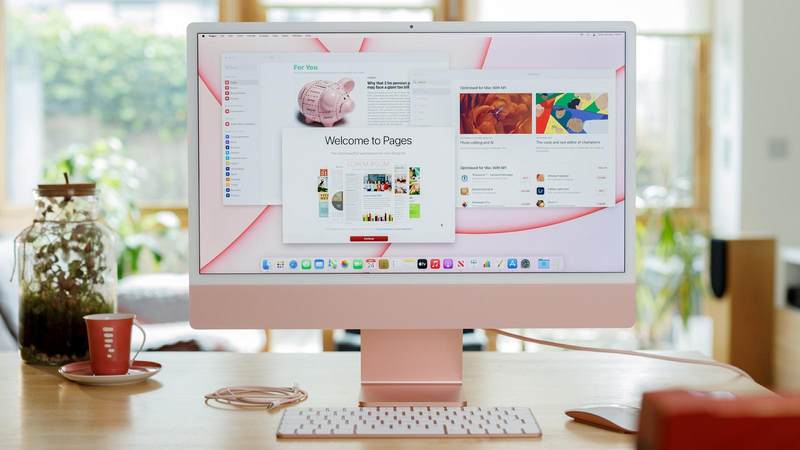
Best Prices Today:
$1249.00 at Adorama$1,271.57 at Amazon$1299.00 at Apple
What is it? Apple unveiled the 24-inch iMac in April 2021. It’s a fresh new take on the iMac and was the first update in more than a decade, with a cleaner design, Apple silicon, and a choice of colors. Apple still hasn’t updated the iMac to the M2 chip–in fact it may not, instead skipping that generation and moving straight to the M3. Read the M3 iMac rumors.
Who’s it for? The iMac is great for both novices and demanding users. It can handle general-purpose and heavy-duty tasks equally well. It’s ideal for someone who needs to buy a complete computer setup (keyboard, mouse or trackpad, and display) and wants to maximize workspace efficiency. The 24-inch iMac is a design icon that will look great in any office.
How much does the iMac cost? Unfortunately the iMac prices outside the U.S. went up in January 2023, making what was already an expensive machine even more pricy. There are three standard configurations starting at $1,299/£1,399 (was £1,249) for the 24-inch iMac M1 with 7-core GPU and 256GB SSD, $1,499/£1,599 (was £1,449) for the 24-inch iMac M1 with 8-core GPU and 256GB SSD, and $1,699/£1,799 (was £1,649) for the 24-inch iMac M1 with 8-core GPU and 512GB SSD.
What are the specifications? The 24-inch iMac uses Apple’s M1 chip rather than Intel’s processors, and there are several configurations available as well as build to order option:
- Apple M1 SoC with an 8-core CPU (4 performance cores, 4 efficiency cores), 16-core Neural Engine, and 7-core graphics processor (GPU); 8GB of memory; 256GB SSD
- Apple M1 SoC with an 8-core CPU (4 performance cores, 4 efficiency cores), 16-core Neural Engine, and 8-core graphics processor (GPU); 8GB of memory; 256GB SSD
- Apple M1 SoC with an 8-core CPU (4 performance cores, 4 efficiency cores), 16-core Neural Engine, and 8-core graphics processor (GPU); 8GB of memory; 512GB SSD
- Additional options: 16GB unified memory and up to 2TB SSD.
What are display specifications?
The 24-inch 4.5K Retina display has 11.3 million pixels and supports the P3 wide color gamut, over a billion colors, 500 nits of brightness, and True Tone. Apple treats the display with an anti-reflective coating to help with readability.
Why does it look different from the other iMacs? The 24-inch iMac has a much different design than the discontinued 21.5-inch and 27-inch models. The bezels around the display are much smaller than on the older iMacs, but it still has a “chin,” a section located below the display that houses the iMac’s internals. The chin doesn’t have the Apple logo on the front. Instead, it’s on the back. Most notably, the 24-inch iMac comes in several colors: the $1, 299 model is available in blue, green, pink, and silver, while the $1,499 and $1,699 models are available in the same colors as well as orange, purple, and yellow.
How do I connect stuff? The $1,299 24-inch iMac 24 has two Thunderbolt 3 ports that also work with USB-C devices. The $1,499 and $1,699 iMacs have two additional USB-C ports. If you have a USB-A device, you need to buy an adapter, such as Apple’s USB-C to USB Adapter ($19). If you have multiple USB-A devices and other items, consider a Thunderbolt hub. The 24-inch iMac also has a headphone jack on the side.
The 24-inch iMac, unlike the older iMacs, does not have an SDXC slot. Once again, you’ll need an adapter, such as the Anker SD Card reader ($17). However, it does have a super-cool magnetic power cord.
Wi-Fi 6 and Bluetooth 5.0 are built-in. Apple doesn’t put a gigabit ethernet port on the 24-inch iMac—instead, it’s on the power adapter. But that ethernet-equipped power adapter comes standard with the $1,499 and $1,699 models. It’s not included with the $1,299 model, but you can select it as an option at the point of purchase—and yes, that means you’ll have to pay extra for it.
How fast is it?: Since the 24-inch iMac has the same M1 as the Mac mini, its speed is very similar. That means it’s fast, and it’s much faster than the 21.5-inch models it replaces. It’s got all the speed general consumers need, and it can handle pro applications with no problem. However, the $1,299 model has only one fan inside its body, while the $1,499 and $1,699 models have two fans. That means the high-priced models do a better job keeping the internals cool. The $1,299 model may need to slow down its performance on heavy-duty tasks in order to maintain a proper temperature.
Macworld’s buying advice: Everything about the iMac was greatly improved with the 24-inch model, from the design to the display to its performance. It’s now more than two years on though and a M2 model is surely in the works at Apple–and, we hope, a iMac Pro model to replace the discontinued 27-inch iMac. If you are buying one the sweet spot is the $1,499/£1,599 model, which gets you more ports, Touch ID, and ethernet.
Read our full
Apple 24-inch iMac (M1, 2021) review
Mac Studio, M2 Max & M2 Ultra (2023)
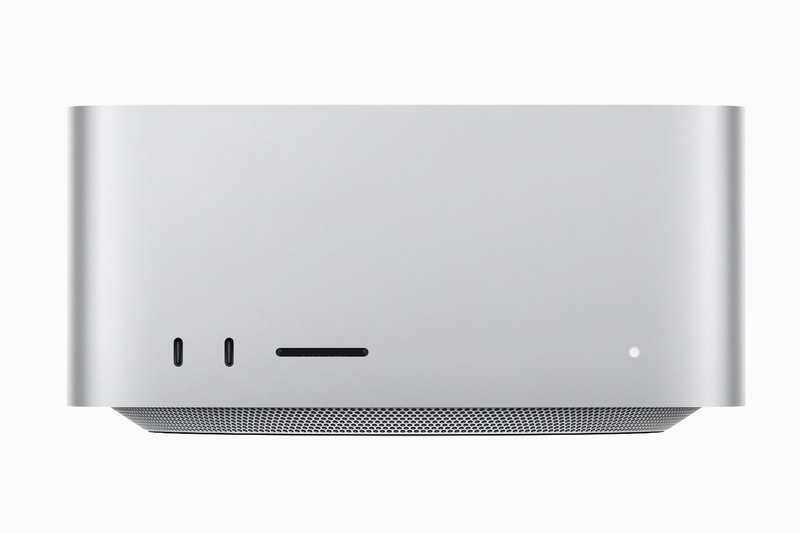
Best Prices Today:
$1799.00 at Best Buy$1999.00 at AdoramaNot Available at B & H Photo
What is it? The Mac Studio joined Apple’s Mac lineup in March 2022 and was updated in June 2023 when it gained the M2 Max and M2 Ultra. It’s a desktop “modular” Mac that’s more powerful (and more expensive) than the Mac mini and similarly speced to the Mac Pro, but lacking the Mac Pro’s expansion options.
Who’s it for? The Mac Studio is for the user who wants the maximum processing power. It’s not the only powerful Mac available–the Mac Pro also runs on the M2 Ultra–but it is the cheapest way to get either the M2 Max or M2 Ultra chips. If you want the expansion options of the Mac Pro then you’ll want to look elsewhere, but the Mac Studio brings all the power usually reserved for the ultimate Mac in a small package.
How much does the Mac Studio cost? There are two standard configurations starting at $1,999/£2,099 (was £1,999) for the Mac Studio M2 Max with 30-core GPU and 512GB SSD, and $3,999/£4,199 (was £3,999) for the Mac Studio M2 Ultra with 60-core GPU and 1TB SSD. There are also build to order options that include 76-core GPU, up to 192GB Unified Memory, and 8TB SSD. Fully maxed out a Mac Studio would cost $8,799/£8,999.
What are the specifications? The Mac Studio uses either the M2 Max or M2 Ultra processors. Apple offers two standard configurations:
- Apple M2 Max SoC with a 12-core CPU, 30-core GPU, 32GB of memory, and a 16-core Neural Engine; 512GB SSD
- Apple M2 Ultra SoC with a 24-core CPU, 60-core GPU, 64GB of memory, and a 32-core Neural Engine; 1TB SSD
- Additional options: M2 Ultra SoC with a 76-core GPU, up to 192GB unified memory and up to 8TB SSD.
The Mac Studio does not include a display, keyboard, or mouse, so you’ll have to provide your own, or you can customize your order to include these devices as extra-cost options. Apple released the Studio Display at the same time as the original Mac Studio, but it can be used with third-party displays, too.
How do I connect stuff?
The Mac Studio has the following ports:
- M2 Max: Four Thunderbolt 4 ports on back; two USB-C ports on front.
- M2 Ultra: Four Thunderbolt 4 ports on back; two Thunderbolt 4 ports on front.
- SDXC Card slot on front.
- Two USB-A ports.
- 10Gb ethernet.
- HDMI 2.0.
- 3.5 mm headphone jack (with advanced support for high-impedance headphones, a feature lacked by the M1-series models)
- 802.11ax Wi‑Fi 6E (was 802.11ax Wi‑Fi 6 in predecessor)
- Bluetooth 5.3 (was Bluetooth 5.0 in predecessor)
Thunderbolt supports USB-C and USB-4.
To connect to a network, you can use the built-in ethernet port, or you can use Wi-Fi, which comes standard.
To connect a display, you can use the HDMI 2.0 port or the Thunderbolt ports. You might have to buy an adapter if your display doesn’t have either HDMI or a port that can connect to Thunderbolt. You can connect up to eight 4K displays, six 6K displays, or three 8K displays to the M2 Ultra. The M2 Max supports fewer displays.
How fast is it? The M2 Ultra Mac Studio is Apple’s fastest chip, both in CPU and GPU speed.
The M2 Max Mac Studio is a very fast Mac at a very competitive price point. Its speed is equal to that of the 14- and 16-inch MacBook Pro models that feature the M2 Max and it costs a fraction of the price: $1,999 compared to $3,099 for the 14-inch and $3,499 for the 16-inch.
Macworld’s buying advice: The Mac Studio is ideal for users who use processor- and graphics-intensive apps, such as media production, software development, graphics software, and more. If you find yourself spending a lot of time watching progress bars while you work, you’ll benefit from the power of the Mac Studio.
However, the Mac Studio relies on external connections for expandability. If you want a pro-level Mac with the ability to swap expansion cards you should look at Apple silicon-based Mac Pro below.
Apple Mac Pro (M2 Ultra, 2023)
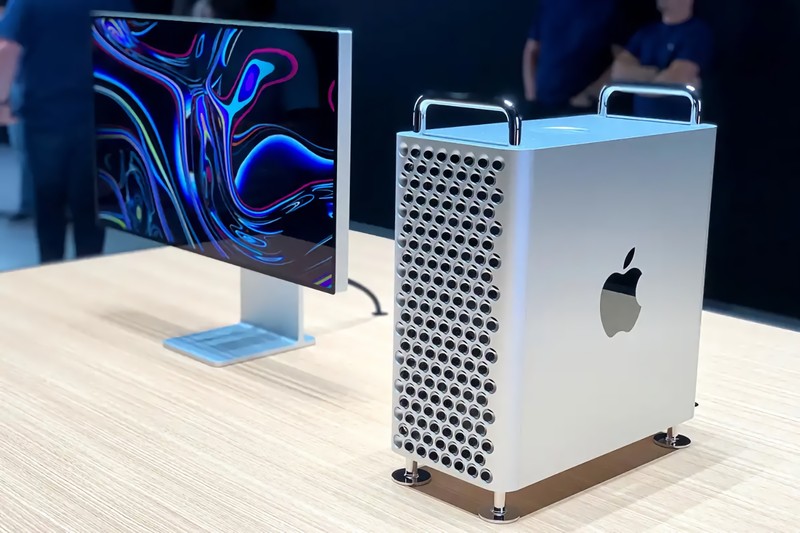
Best Prices Today:
Not Available at Adorama
What is it? The Mac Pro is Apple’s workstation. It’s designed for professionals who need a powerful and flexible machine. Apple took its time to update the Mac Pro with its own silicon, but in June 2023, three and a half years after the previous update, the company finally came up with the goods.
Who’s it for? The Mac Pro is designed for professionals who work with applications that use as many processing cores as possible—video-editing applications, image-editing software, 3D programs, audio editing, software developers, and the like.
How much does the Mac Pro cost? The Mac Pro starts at $6,999/£7,199 (which is up from the previous generation’s starting price of $5,999/£5,499). That’s for the Tower version, there is also a Rack mount version that starts at $7,499/£7,699. Those are the starting prices, you can choose various configuration options, such as the 76-core GPU and the 192GB unified memory and 8TB storage – just as with the Mac Studio. A fully specced out Mac Pro Tower costs $11,799/£11,999.
What are the specifications?
The specifications on offer are identical to the Mac Studio with M2 Ultra:
- Apple M2 Ultra SoC with a 24-core CPU, 60-core GPU, 64GB of memory, and a 32-core Neural Engine; 1TB SSD
- Additional options: M2 Ultra SoC with a 76-core GPU, up to 192GB unified memory and up to 8TB SSD.
How do I connect stuff?
Mac Pro has the following ports:
- M2 Max: Four Thunderbolt 4 ports on back; two USB-C ports on front.
- M2 Ultra: Four Thunderbolt 4 ports on back; two Thunderbolt 4 ports on front.
- SDXC Card slot on front.
- Two USB-A ports.
- 10Gb ethernet.
- HDMI 2.0.
- 3.5 mm headphone jack (with advanced support for high-impedance headphones, a feature lacked by the M1-series models)
- 802.11ax Wi‑Fi 6E (was 802.11ax Wi‑Fi 6 in predecessor)
- Bluetooth 5.3 (was Bluetooth 5.0 in predecessor)
To connect a display, you can use the HDMI 2.0 port or the Thunderbolt ports. You might have to buy an adapter if your display doesn’t have either HDMI or a port that can connect to Thunderbolt. You can connect up to eight 4K displays, six 6K displays or three 8K displays.
To connect external devices, the Mac Pro has eight Thunderbolt 4/USB-C ports, three USB-A ports, two HDMI ports, and Dual 10Gb Ethernet. But the real draw for creative pros will be the seven PCI Express expansion slots, one of which comes with an Apple I/O card installed.
How fast is it? Apple says the 2023 Mac Pro is up to 3x faster than the previous-generation Intel-based model. With support for 192GB of unified memory, Apple says the Mac Pro supports “more memory than the most advanced workstation graphics cards, taking on demanding workloads other systems can’t even process.” Apple says that, like the M2 Ultra Mac Studio, the M2 Ultra Mac Pro can plan an “unprecedented 22 streams of 8K ProRes video.”
Macworld’s buying advice: The Mac Pro provides the processing power that the most demanding users need. We’re talking about production environments, like TV and audio recording studios, animation houses, and software developers. If you feel like you can never have enough power, you’re probably the professional the Mac Pro is aimed at. But if you don’t need the expandability then the Mac Studio will probably be adequate.
If you’re more of a “prosumer” than a professional—someone who is an expert Mac user, but doesn’t use high-end apps—the Mac Pro is overkill. You’re probably not going to be able to take advantage of what the Mac Pro has to offer.
